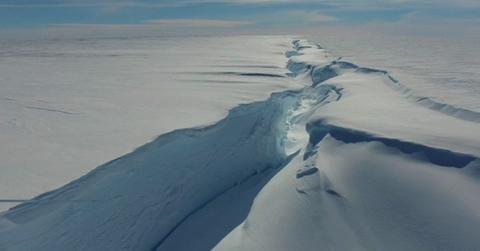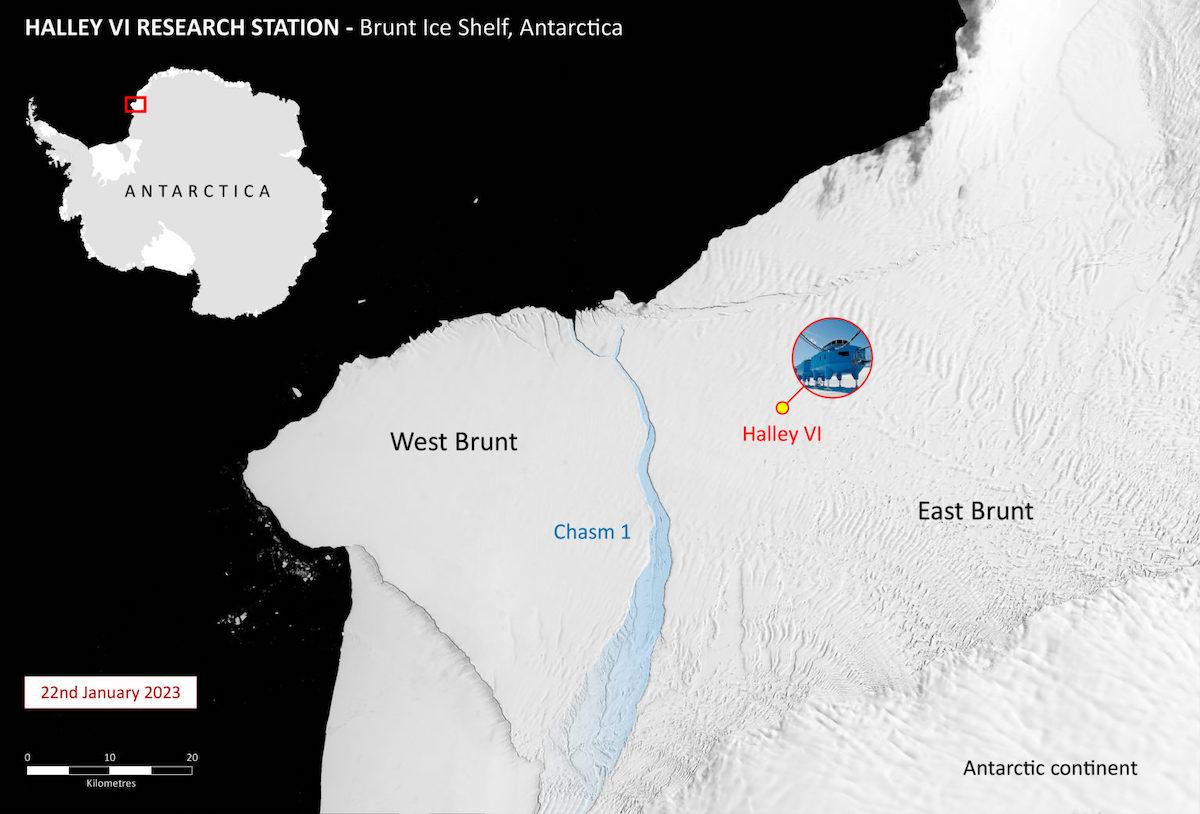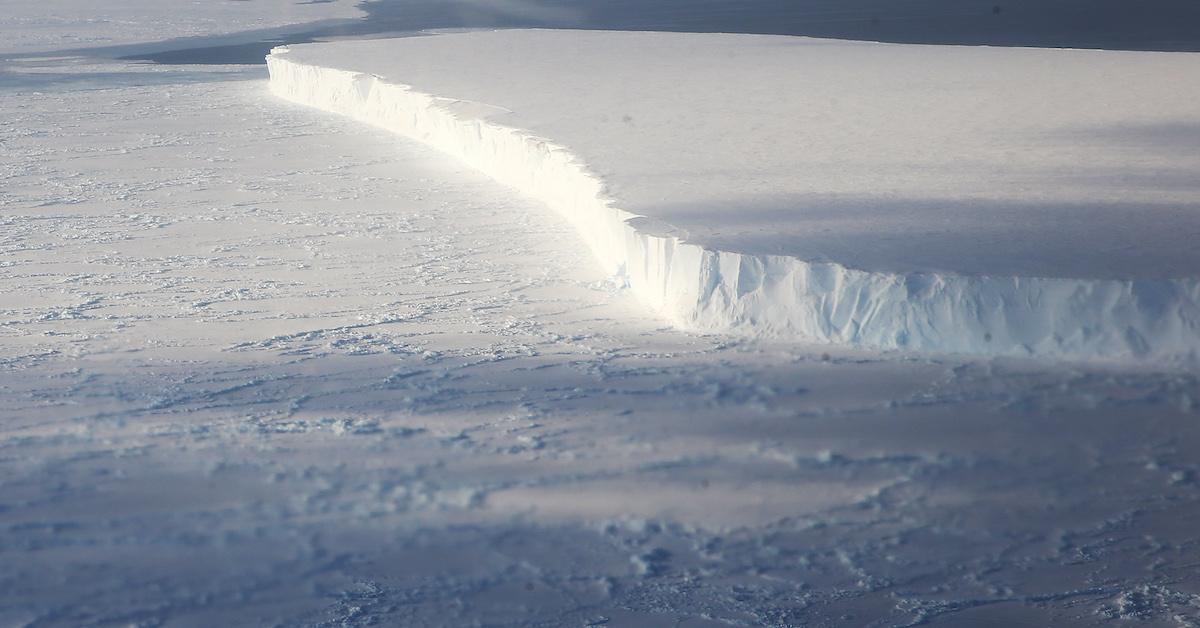Massive Iceberg Breaks Off in Antarctica — but Experts Say It Wasn't Due to Climate Change
Updated Jan. 26 2023, 12:07 p.m. ET

Sometimes, when a massive iceberg breaks off of an ice shelf, it gives environmentalists an excuse to let out a bit of anger at climate science deniers, and say things like "See! Look what the climate crisis is doing to the planet!"
But apparently, the most recent significant iceberg calving event — as part of the Brunt Ice Shelf in Antarctica — is not a direct result of global warming, according to scientists who have been preparing for this to happen.
However, that doesn't mean that this event is not at all linked to climate change, or that it won't have any implications on the environment. Keep reading for the full details.

An iceberg the size of London has broken off of the Brunt Ice Shelf in Antarctica.
On Jan. 23, 2023, the British Antarctic Survey (BAS), the U.K.'s national polar research institute, published a press release announcing that the Brunt Ice Shelf in Antarctica's Weddell Sea calved a giant iceberg the evening prior, on Jan. 22. The Brunt Ice Shelf is home to the BAS Halley Research Station, which was unaffected by the incident.
According to the BAS, a crack in the iceberg named Chasm-1, which had been dormant for years, finally "fully extended through the ice shelf" on Sunday evening. This event created a new iceberg, measuring about 1,550 square kilometers in size — that is nearly as big as the Greater London area. The U.S. National Ice Center named the iceberg "A-81."
The Brunt Ice Shelf, which is about 150 meters (492 feet) thick, has been naturally developing cracks in recent years, the release explains.
The Director of BAS, Professor Dame Jane Francis, explained that the institute's glaciologists and other employees "have been anticipating this event," as they have been carrying out frequent measurements of the ice shelf with high-precision GPS instruments.

A tabular iceberg floats near the coast of West Antarctica as seen from a window of a NASA Operation IceBridge airplane on Oct. 27, 2016 in-flight over Antarctica.
Why did iceberg A-81 break off? It wasn't global warming or climate change, experts say.
“This calving event has been expected and is part of the natural behavior of the Brunt Ice Shelf. It is not linked to climate change," Professor Dominic Hodgson, a glaciologist for BAS, said in a statement.
"The changes in the Brunt Ice Shelf are a natural process," the press release added. "There is no connection to the rapid calving events seen on Larsen C Ice Shelf which had extensive surface meltwater at the time of its collapse, and no evidence that climate change has played a significant role."
The Larsen C Ice Shelf is one of the largest ice shelves in Antarctica. As per the BAS, in July 2017, a big section of the Larsen C Ice Shelf split away and resulted in a formation a massive iceberg (named A-68), approximately the size of the country Luxembourg. At the time, BAS stated that it was "not possible to say whether climate change contributed to the Larsen C changes."
So if this January 2023 event was not the result of climate change, why exactly did it happen?
According to the NASA Earth Observatory, icebergs calving from ice shelves "is part of a natural, cyclical process of growth and decay at the limits of Earth’s ice sheets." As the agency explains, the more than glacial ice spreads from land to sea, the glacier grows thinner; then, as storms and tides continue to flow, the glaciers become even more stressed, thinned, and melt, "ultimately making them more prone to forming rifts and breaking away."
How does global warming affect icebergs?
According to an August 2022 study by NASA, the Antarctic ice sheet has been calving icebergs increasingly quickly over the past few decades. And since the ice shelves in Antarctica help control how glacial ice drains into the ocean, that means that the "structural integrity of these fragile, floating extensions of the ice sheet" have a significant impact on global sea level rise.
Overall, the researchers found that "calving and thinning have produced equivalent reductions in ice-shelf buttressing since 2007, and that further retreat could produce increasingly significant sea level rise in the future."
So while anthropogenic emissions may not be what's causing icebergs to break off of ice sheets in Antarctica, iceberg calving events are having more and more of an effect on rising sea levels, which are a major component of the climate crisis.